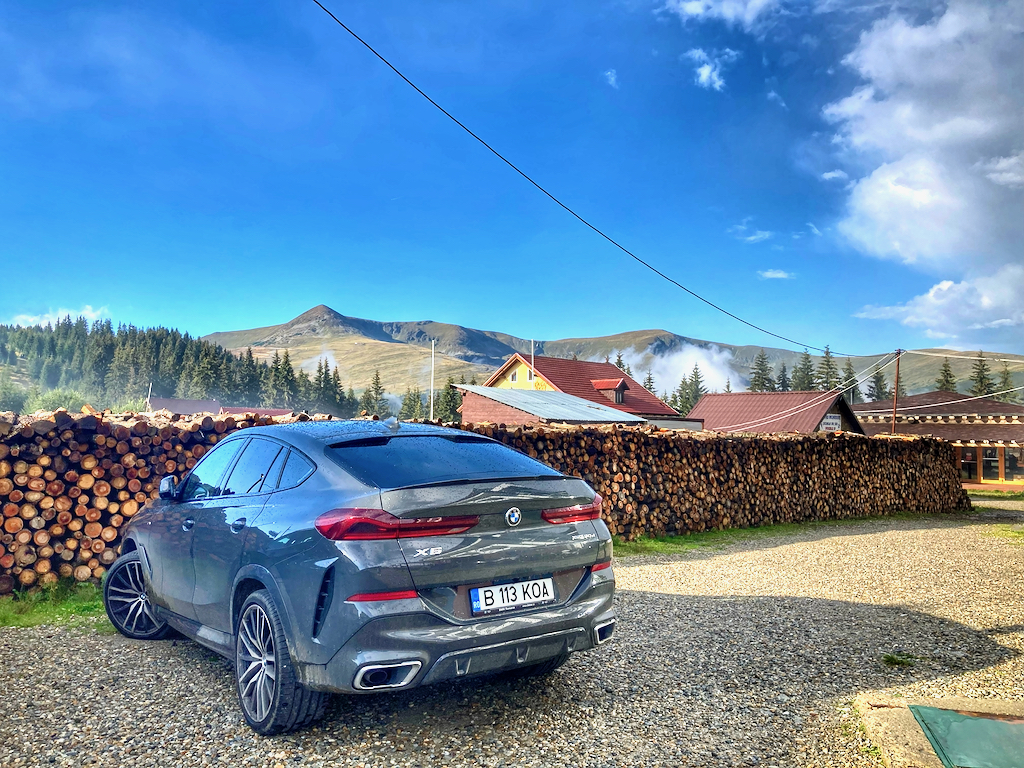
North of the Danube and south of the Carpathian Mountains in Romania, Wallachia is an ancient region with a rich palette of historical, cultural and natural attractions - from a unique planetarium in a salt mine to a variety of museums and vineyards.

Picking up a BMV X6, a powerful mid-size SUV perfect for cross-country travel, from BMV Romania in Bucharest, my companion and I headed west towards the broad rolling hills of Dealu Mare, one of the country’s leading wine regions. Here we meandered amidst rambling bucolic countryside to vineyards such as the 82-hectare LaCerta, named after the Latin word for a small lizard that inhabits the area; Prince Matei, Tohani, Viile Metamorfosis and Davino. Well known for velvety whites of medium acidity and smooth, well-balanced, full-bodied reds, naturally we paused for tasting opportunities offered by the vintners.

Next stop on our Wallachian road tour was the rustic village of Colti, less than a hundred miles from Bucharest, which became famous in the mid-1920’s after large deposits of amber were discovered and multiple mines opened. A small amber museum in the village houses around 200 pieces including intricate jewellery carved from the tree resin, including a set worn by Elena Ceausescu, wife of the former Communist dictator toppled in the revolution of 1989. The museum also hosts a collection of mine flowers and fossils, as well as traditional mining tools and archaeological artefacts.

As we found out to our delight, Colti is also an excellent place for lunch with delicious homemade traditional dishes such as zacusca (a type of ratatouille) prepared at the family-run Casa Militaru.

A distinctive aspect of Romania is its salt mines and one of the most popular lies near the town of Slanic, two hours west of Col?i. First opened around 400 years ago and located more than 200 meters underground, visitors are taken into the mine by minibus along an underground road for several kilometres. Aside from the therapeutic benefits of breathing in its pure fresh air, this salt mine is so vast inside it also has a children’s playground, salt sculptures, a cafe and even sports fields where visitors can play volleyball and tennis.

But the most intriguing aspect of this particular Romanian salt mine is an innovative attraction developed by dynamic entrepreneur, Dragos Brasov. Fascinated by the sky at night, Dragos has worked hard to develop the ’Supernova Planetarium,’ the largest such project in the country. Here, deep below the surface of the earth, inside a 16-meter diameter dome, we enjoyed fascinating interactive presentations of constellations, galaxies, comets, asteroids and other intriguing aspects of outer space.

A 90-minute drive southwest from Slanic is the historic town of Targoviste, the former capital of Wallachia, linked to the well-known figure of Vlad the Impaler, who built the 27-meter high Tower of Chindia here, which now has three floors connected by a winding staircase and an open terrace and hosts various exhibitions. This charming town is also home to interesting museums, including the National Museum Complex, also known as the Royal Court, which comprises residences used by nobility for more than three centuries including the Royal Palace and Balasa House, as well as the Great Princely Church featuring intricate frescoes.

Built in the 17th century, the Museum of Printing and Old Romanian Books is also a must-see here as it houses many rare manuscripts and a classic 18th-century printing press.
Almost three hours northwest of Targoviste is the nation’s leading pottery center - the quaint town of Horezu. For generations, using traditional tools including a wheel and comb for shaping, a hollowed-out bull’s horn and fine wire-tipped sticks and a wood-burning stove for firing, craftspeople have shaped and decorated their art in vivid shades of dark brown, red, green, blue and ‘Horezu ivory.’ Ateliers line some streets and you can watch the artists’ patiently at work and buy directly from them as we did.

Rising northward for more than an hour higher into the Carpathians, we arrived at the mountain-top town of Ranca where our BMV X6 really displayed its strength. With its 4.4-litre twin-turbo V8 engine and all-wheel-drive system and automatic transmission, it climbed the steep, torturous road from the town of Novaci at the foothills of the Parang Mountains to the high peaks with ease.
Ranca, a popular ski and hiking destination, marks the beginning of the Transalpina, or ‘The Devil’s Path,’ a high-altitude road rising to over 7,000 feet, with breathtaking views over the surrounding countryside. Built in the 2nd century AD by Roman legions and used to help transport gold from Transylvania to Rome, it is the highest road in Romania. Along the way, local artisans and food producers, particularly cheese-makers, sell their wares directly from display tables.

A visit to Wallachia would not be complete without travelling to Targu Jiu to pay respect to the nation’s foremost modernist sculptor, Constantin Brancusi. One of his famous works, ‘The Endless Column,’ is situated in the town park, offering visitors the possibility to examine it from all angles. This 30-meter column of zinc, brass-clad, cast-iron elements threaded onto a steel spine is part of a three-sculpture ensemble along with two travertine monuments called ‘The Kissing Gate,’ designed like a triumphal arch, and ‘Table of Silence,’ symbolising time, represented by the circular arrangement of twelve hourglass chairs. The work is the artist’s homage to the Romanian heroes of the First World War.

A surreal, magical-laden stop on our way back to Bucharest was the enchanted ‘Color Forest’ in the village of Poenari where locals have painted the trunks of trees in a kaleidoscope of bright colors and where one half-expects Merlin to appear from the shadows.

While in the area, make sure to sample a few delicacies at Fabrica Dulce (Sweet Factory), a fine artisan pastry-maker in the tiny village of Milostea. Like us, you’ll probably end up buying a large gift box of goodies for the road back to Bucharest. And for friends, if they’re lucky.









